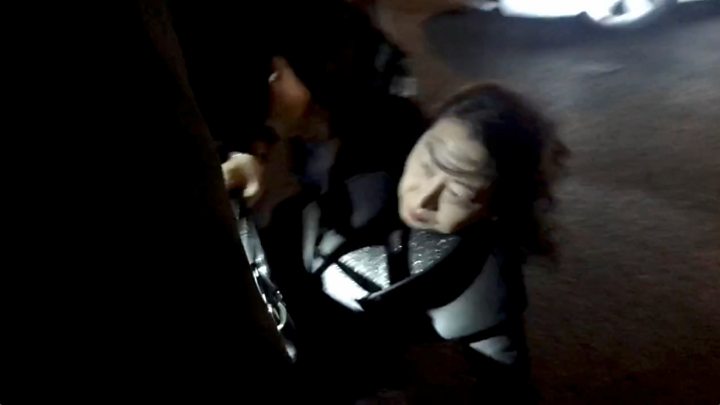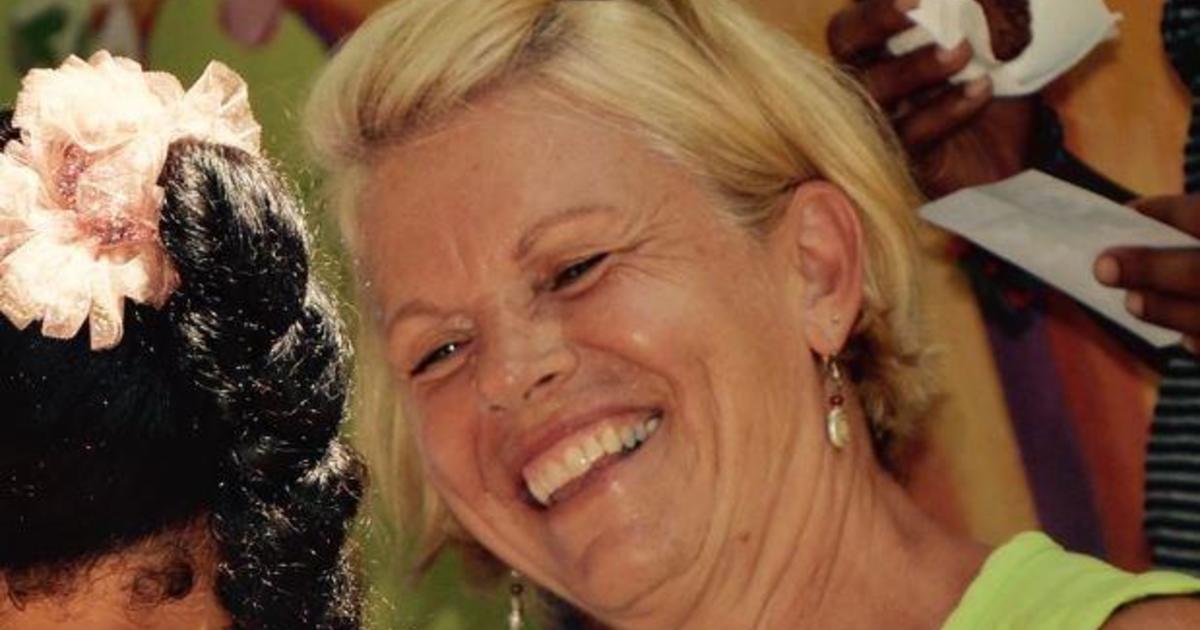Tyrone Siu
Reuters
Anti-government protesters at the Chinese University of Hong Kong on Thursday.
HONG KONG — Behind a barricade made of bamboo scaffolding, desks and umbrellas, Damon naps in a truck tire next to a baseball bat.
At midday Thursday, the junk offers a bit of shade. The 17-year-old high school student — dressed in black and wearing knee pads — has barely slept since he moved onto the Chinese University campus. The tire leans against a car door, and he’s not sure where either came from.
“I don’t know, maybe that truck,” he says, gesturing to the scorched, toppled vehicle a short distance away.
Some of the city’s working men and women are using their spending power to help front-line protesters confront police during the demonstrations in Hong Kong.
Two nights ago, the truck ignited when police besieged a bridge leading to the university, among Hong Kong’s most prestigious colleges, provoking one of the fiercest clashes of the pro-democracy uprising.
For nearly six months, protesters have taken to the streets of the semiautonomous financial hub demanding more democracy and less Chinese encroachment. The movement assumed new urgency Tuesday night when police pummeled students with tear gas and rubber bullets, turning the Chinese University campus into a conflict zone as students fought back with gasoline bombs and bricks.
[As unrest paralyzes Hong Kong, college students from elsewhere begin to evacuate]
Since then, the campus has been usurped by students and volunteers, transforming it into a fortress. The bridge, which reeks of petroleum and burned rubber, has become an arsenal, equipped with a makeshift catapult, javelins, bows and arrows, molotov cocktails. There are shopping carts stacked with bricks, and boogie boards for use as shields.
“They can deal with tear gas and rubber bullets,” says Jonathan, a 29-year-old alumnus and finance worker who, like Damon, gave only one name for fear of retribution. “We don’t have anything for real guns.”
Tyrone Siu
Reuters
An anti-government protester holds a bow and arrow during a standoff with riot police at the Chinese University.
Police have described the university — in Hong Kong’s northern reaches, about 14 miles from the central business district — as a weapons factory. As protesters mill about the 340-acre campus, a day after classes were suspended, the atmosphere feels volatile. Exchange students preparing to leave the city drag suitcases down the barricaded access road.
When sirens sound, everyone goes silent and looks for the source.
“Police?” exclaims Jonathan, when he mishears a conversation about a nearby protest. “No, no, Poly University,” comes a comrade’s reply, referring to another campus where police fired tear gas at students on Thursday. “Oh, okay.”
https://twitter.com/caseyquack/status/1194921200364843008?s=20">
Between shifts hauling supplies to lecture halls and hammering bricks, hundreds hang around the graffiti-covered campus-turned-commune — napping wherever they can, checking their phones, enjoying the respite. But as the hours tick by, there’s a sense that things could flare again at any moment.
Hong Kong’s government, urged on by Chinese leaders, has intensified a clampdown on demonstrators who have responded to each uptick of force with a reciprocal escalation. Unrest increased sharply this week after the police shooting of a protester and the death of another who fell from a parking garage as police dispersed crowds nearby. On Thursday, Hong Kong’s government suspended all school classes through Sunday and said it would recruit correctional officers to reinforce police ranks.
Police fired shots at protesters in the eastern district of Sai Wan Ho on Nov. 11 and critically injured a 21-year-old protester who appeared to be unarmed.
The police raid at Chinese University has been a clarion call for other colleges to erect barricades. Protests flared Thursday at the Hong Kong Polytechnic University and in the city’s downtown area.
[‘We are in a war’: In Hong Kong, an accountant by day becomes street fighter by night]
The campus clashes have reinforced a growing sense that the next phase of the struggle would be centered on the city’s classrooms.
This week, China’s cabinet published an education policy document outlining revisions to promote loyalty to Beijing. The issue of patriotic education has been divisive in Hong Kong; parents and students took to the streets in 2012 to force the withdrawal of a proposal to introduce Chinese textbooks that appeared to criticize democracy and applaud the “China model” of one-party rule.
Thomas Peter
Reuters
A protester at the occupied campus of the Chinese University in Hong Kong.
The document released by China’s cabinet did not give details but said a new, nationwide curriculum would “consolidate the common ideological and political foundation,” boost support for the socialist system and the Communist Party of China, and “guide” residents of Hong Kong, Macao and Taiwan, as well as overseas Chinese, “to enhance their national identity and consciously safeguard national and ethnic unity.”
On Chinese social media, commentators appeared to express shock at the depth of antipathy toward the mainland among Hong Kong youth.
In a widely circulated post, Lu Kewen, a popular columnist, blamed Hong Kong’s Western-style education system for making “Hong Kongers under 30 fully stand with the ideology of the Western world,” adding that “they are disgusted by everything about the mainland.”
[A Hong Kong campus becomes a combat zone, fueling doubts about elections]
On Thursday, the Nanchang Aviation University in southern China announced it would “severely handle” the case of a professor who expressed sympathy for Hong Kong protesters in a private messaging group.
At the Chinese University, protesters have maximized every resource to make the campus a perfect citadel. The first-aid team took over the gymnasium: Nurses and volunteers man tables of creams and bandages while others sleep on the floor under space blankets. A whiteboard keeps track of the injuries — calf wound, eye injury, ankle sprain — who’s on duty, and emergency numbers.
Anthony Kwan
Getty Images
Protesters sleep in tents and sleeping bags at a sports ground at the Chinese University of Hong Kong on Thursday.
The racetrack is the most popular sleeping quarters, although some protesters erect tents on the inner field. Strewn around are protective items, flip-flops and slippers. Some use winter coats as blankets and sleep under umbrellas. A lecture hall operates as a supply center, where piles of donations are at their disposal: clothes, blankets, battery packs, protective gear. A makeshift store offers candy, cup noodles and more.
Rare weekday fighting in Hong Kong carried into Tuesday night as authorities admitted that the city is on the verge of collapse.
China has pressed Hong Kong officials to end the protests. The state-controlled Global Times tweeted Thursday that Hong Kong officials would soon impose a curfew, before quickly deleting the message, saying the sourcing did not meet the nationalist tabloid’s standards.
Hong Kong’s government later said in a statement that rumors of a curfew were “totally unfounded.”
Meanwhile, Hong Kong’s students are bracing for another possible attack. Some here talk of “June 4” — a reference to the Tiananmen Square massacre of 1989, when China’s ruling Communist Party gunned down hundreds, perhaps thousands, of pro-democracy demonstrators in Beijing.
“We can see the Chinese government and the Hong Kong police are trying to invade our school campus, our liberty, our future,” Damon said.
Justin Chin
Bloomberg
A makeshift brick wall forms a barricade on Pokfulam Road outside the University of Hong Kong on Thursday.
Shih reported from Beijing. Tiffany Liang contributed to this report.
Read more
As unrest paralyzes Hong Kong, college students from elsewhere begin to evacuate
‘We are in a war’: In Hong Kong, an accountant by day becomes street fighter by night
A Hong Kong campus becomes a combat zone, fueling doubts over elections
Today’s coverage from Post correspondents around the world
Like Washington Post World on Facebook and stay updated on foreign news
Let's block ads! (Why?)
https://www.washingtonpost.com/world/asia-pacific/behind-the-barricade-hong-kong-protesters-turn-a-university-into-a-fortress/2019/11/14/7d03d9f6-06a3-11ea-9118-25d6bd37dfb1_story.html
2019-11-14 11:25:00Z
52780435950054







